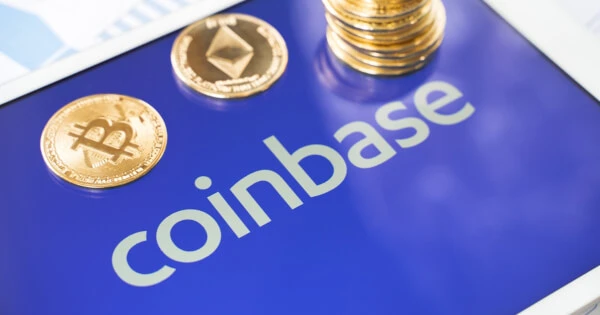Mar 27, 2022 08:10
The majority of the traders in the crypto market had some set goal before entering the crypto market. One of these was to make as much profit as possible. Although most of them have been able to actualize this dream, others have not. The crypto market is very technical, and things move rapidly. So a trader needs to discover a strategy that works for him in making profits and stick to the strategy. For instance, if a trader decides to hodl some assets for a long time, he could recoup massive profits while another trader could lose a considerable amount of his portfolio. This article will discuss staking and how profitable it is in the crypto market.
[toc]
What Is Staking?
In the simplest term, staking provides you with a way to earn profits using your digital assets. One surprising fact is that you can do this while still being in control of your digital assets. You have to hold it over that particular time and earn the corresponding rewards. Also, your rewards are fixed, and you will receive the same amount of rewards even if the market surges or undergoes a decline.
Staking is like sending funds into a savings account while the interest accumulates over time. Meanwhile, it provides support and security to the blockchain, which helps users earn rewards. Rewards are paid according to percentage in a given. This means that a corresponding reward will be paid at the end of the staking period over the time you choose to lock your tokens. Staking is a clear-cut way to generate income as many blockchains offer traders mouth-watering interests to lock their tokens.
What Is Proof Of Stake?
Proof of stake is a consensus mechanism focused on validating transactions through staking. For this to be achieved, the nodes need to agree on the present state of the blockchain and which transactions should be counted as valid. Although there are other consensus mechanisms in the crypto sector, traders use proof of lock because of its efficiency. They can also earn rewards depending on the amount of tokens they lock and the time used to lock the tokens. Rewards are the incentives that blockchain provides to users that carry out essential functions like validating blocks of transactions. Staking automatically opens you up to rewards because you will be allowed to validate transactions and keep the network secure.
How does Staking Crypto work?
As mentioned above, staking requires you to pledge your tokens to a blockchain while still being in charge of them for a specific reward. The network relies on the traders staking their tokens to verify transactions while securing the network on which they are staking their tokens. However, you should note that all crypto assets cannot be locked. This is because all tokens do not have the same consensus algorithm. For example, Bitcoin is a proof of work token which means that you must mine Bitcoin using high-grade hardware to earn profits.
On the other hand, proof of stake tokens allows traders to mine new tokens or carry out other actions depending on how many tokens they have locked. Also, you can choose to unlock your tokens after some time if you want to trade the assets. While staking, you won’t be able to sell your tokens but will still be in possession of them. However, unstacking at the end of your period can be quite tasking. This is because the network allows you to unlock your tokens for days, which is usually seven days.
How To Stake Your Tokens
Staking crypto might look daunting and tasking, but you have a full assurance that it is pretty easy once you follow a laid-down guide. This is because the market is technical, and you would only make headway if you followed some laid down instructions. Below are the steps to stake your tokens;
Buy A Proof Of Stake Token
As mentioned above, not all crypto across the market support staking. This is because some rely on other algorithms asides from Proof of Stake. To carry out staking effectively, you will need a token that supports proof of stake. Ethereum, Cardano, Polkadot, and Solana are some digital assets that support staking. You should note that these are only the top tokens that support staking as they are still a majority that does so in the market. Now, you will have to pick one and learn about it to understand further how the toKen works before you go further. You should consider aspects like staking rewards, how easy the staking process is, the staking period, and other factors.
Move The Crypto To Your Wallet
After choosing a token to stake, you will need to purchase the token. Most centralized crypto exchanges have their hot wallet where you can store assets. It is not advisable to keep your assets on there for longer periods as they are at risk of getting stolen by malicious actors. However, you will need to keep your token there if you want to stake on the exchange. In the same vein, if you do not, you will have to transfer your tokens to a blockchain wallet supporting the token. Although you can get some software wallets for free, you should explore hardware wallets like Trezor, Ledger, or KeepKey. Once you transfer your tokens to your wallet, you are good to go for the next step.
Join A Staking Pool
Although different digital assets have different staking methods, most of them work with something known as a staking pool. Most traders use these pools to combine their staking power to earn higher yields and rewards. You will need to research and get up to speed about the staking pools of the crypto that you have picked to understand better how to join them. However, there are a few things that you should look out for when picking a staking pool they are;
Reliability: Earning staking rewards can only be possible if the servers of the staking pools are up and running. However, no server runs 100% of the time. What you will do concerning this is to find one that is very reliable in terms of uptime.
Fees: Most of these staking pools will cut a tiny portion of your rewards as an incentive for slowing you join the pool. However, it would be best to be mindful of pools that overcharge users before joining the pool. A good staking pool will only take about 2% to 5% of your rewards.
Size: One of the reasons why traders join staking pools is to validate transactions and make passive profits. However, they won’t be able to do that if they are not chosen to carry out the activities. This is because the pool with more tokens is chosen to validate transactions. This is why it is advisable to choose a moderately sized pool. Choosing a more extensive pool can also put you in trouble when it becomes oversaturated. Once you have found a pool with the criteria above, you can go ahead and start your staking journey. After that, you need to sit down and start earning rewards.
What Are The Benefits Of Staking?
Staking is a method to generate income using the tokens in your possession without giving them up. However, there are some benefits that it provides traders who intend to enter the market to stake their tokens. The benefits are;
Easy Earning: The crypto market requires a strategy to earn rewards as traders toil day and night for the right strategy. On the other hand, staking provides users with a quick way to earn simple and easy rewards provided they follow the laid down guide on staking.
No Technical Equipment: Unlike the proof of work consensus, traders do not need to buy or rent heavy machinery to carry out staking. This will save them costs or renting and maintaining while still helping them maximize their returns.
Security and Efficiency: Although stakers help the network achieve this by staking their tokens, it is also helpful. If the network is not secure, hackers can breach their way into the network and steal the tokens in the pools. The network will also not be able to run efficiently, which could cause problems for the stakers.
Environment Friendly: In terms of earning rewards, staking has always been one of the best methods to earn rewards. Besides that, it is also the best bet when it comes to being environmentally friendly. There have been calls for a ban on mining activities across certain countries due to the severe effects of crypto mining on the environment.
Risks Of Staking
Volatility: This is a known phenomenon that affects every crypto investment in the crypto market. Unfortunately, staking doesn’t provide cover for this as rewards always suffer. The price of the locked token also drops, which further culminates in a loss in rare cases.
Lock-Up Period: You will need to lock up your tokens for a specific period of your choice when you plan to lock. During this period, you won’t be able to carry out any actions with your tokens. In the case of a price fall, you can only watch your investments dwindle. However, the rewards might make up for some of the lost amount values of your token.
Unstake Period: This is the major highlight of the risks of locking. This is because networks only allow you to unstake for a period, usually seven days or more. If you miss the unstaking period, your tokens will go back into staking mode.
When Should You Stake?
Like most investments in the crypto sector, you should lock only when you have excess digital assets you have no use for in the future. This is because staking requires a long wait, and your assets will not be accessible for the period. While you’re earning, you can continue your other activities. Also, in the case of price decline, there won’t be any panic rush to unstake your tokens as you can jump right back in to make more profit when the market stabilizes. Also, you should research how good an offer is a reward on staking a particular token before you lock it as their rewards vary with time and performance.
Top 5 Best Staking Platform In 2022
Talking about staking will not be complete without looking into the respective platforms that make it possible to generate passive income. These platforms provide top-notch staking services to their users with the smallest charges possible. Below are the top 5 platforms for this year;
#1 Coinbase
Coinbase was launched in 2012 as a crypto exchange. Due to the exchange being reasonably long in the sector, it is trustworthy and provides impeccable services. Coinbase allows users to lock their proof of stake tokens by depositing them into a vault owned by the company. Traders can start staking with as low as $1 and earn rewards. Staking rewards vary on Coinbase as traders can earn about 20% APR on their cumulative assets.
#2 Kraken
Kraken allows traders to lock and earn rewards on close to 10 digital assets on the platform. Traders are eligible to earn about 20% APR every year on staking. However, respective digital assets have rates. Besides that, Kraken also offers one of the best liquidity in the market and allows you to lock as you want. Kraken sends rewards to traders twice every week, and rewards are based on how long a trader stakes his tokens.
#3 Crypto.com
Crypto.com’s staking services are open largely to United States traders. Although other traders can enjoy the benefits, it varies according to the location and application one uses to access the platform. Traders can only lock the CRO token, its native digital asset. However, an earn program rewards traders based on how many tokens they lock up on the exchange. According to crypto.com, users can earn as high as 14% in rewards. Asides from its main app, it also provides staking services on its DeFi application.
#4 Gemini
Traders can enjoy staking on about 43 digital assets on Gemini. This is one of the hugest numbers of staking, offering a platform that allows users to enjoy. Although its program is not the typical staking, traders earn rewards on holding different crypto. Although users can request liquidity anytime they wish, the platform only sends them after five working days. However, Gemini pays rewards on it every day.
#5 eToro
eToro is a social trading platform with locking features for selected tokens. It provides a wide range of services including forex and crypto services. eToro supports tokens across Ethereum 2, Cardano and Tron. Traders who use the eToro staking features are eligible to get their rewards every month.
Conclusion
Staking is an activity that provides an excellent incentive for traders. Although the rewards are fixed, it is a way to make passive income in the sector. However, traders should ensure that they carry out much research before staking. This will help them determine what to lock, what pool to use, and how much incentive they stand to earn. It is also advisable to use tokens that you have no use for in case of a price drop. In general, diversify your assets and watch your portfolio rise.
Staking Crypto
© Cryptoticker








